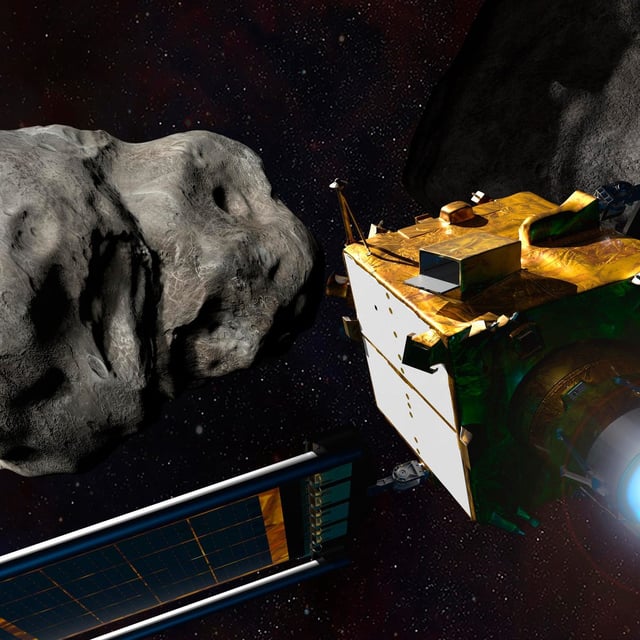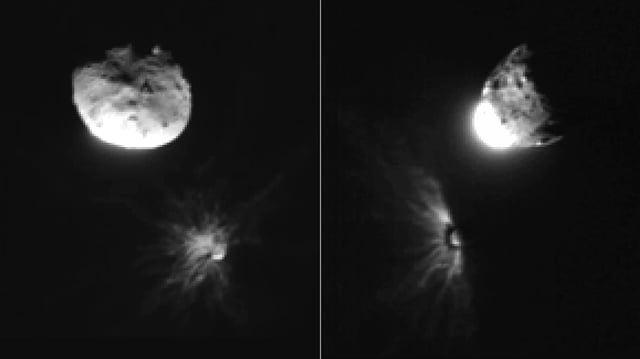Overview
- Scientists estimate about 35.3 million pounds of dust and rocks were expelled, less than 0.5% of Dimorphos yet roughly 30,000 times the spacecraft’s mass.
- Imaging indicates the plume was dominated by particles about a millimeter or larger, with an opaque inner region that concealed nearly 45% of the mass.
- The ejecta imparted a shove several times stronger than DART’s direct hit, contributing to the 33-minute reduction in Dimorphos’ orbital period.
- LICIACube captured 18 images in about 60 seconds during a 15,000 mph flyby, with the closest shot taken roughly 53 miles from the surface.
- Researchers say the results underscore how rubble‑pile asteroids can produce strong ejecta and should inform the design of future deflection missions.

